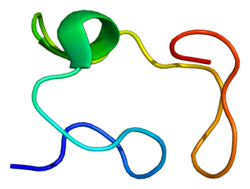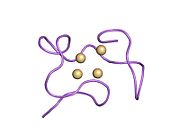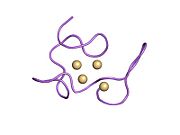
Inhibin, alpha, also known as INHA, is a protein which in humans is encoded by the INHA gene.

Semenogelin-1 is a protein that in humans is encoded by the SEMG1 gene. The protein encoded by this gene is the predominant protein in semen. The encoded secreted protein is involved in the formation of a gel matrix that encases ejaculated spermatozoa. The prostate-specific antigen (PSA) protease processes this protein into smaller peptides, with each possibly having a separate function. The proteolysis process breaks down the gel matrix and allows the spermatozoa to move more freely. Two transcript variants encoding different isoforms have been found for this gene.
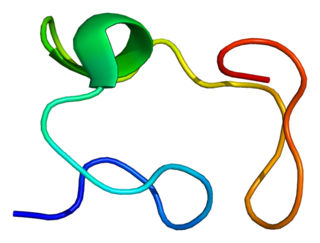
Metallothionein-1A is a protein that in humans is encoded by the MT1A gene.

Macrophage scavenger receptor 1, also known as MSR1, is a protein which in humans is encoded by the MSR1 gene. MSR1 has also been designated CD204.

Metallothionein-3 is a protein that in humans is encoded by the MT3 gene. It is a 68-amino acid peptide that is abnormally under-expressed in the brains of patients with Alzheimer's disease. Metallothionein-3 is a member of the metallothionein family of proteins.

Kallikrein-related peptidase 4 is a protein which in humans is encoded by the KLK4 gene.

Cathepsin H is a protein that in humans is encoded by the CTSH gene.

Kallikrein-11 is a protein that in humans is encoded by the KLK11 gene.

Metallothionein-1F is a protein that in humans is encoded by the MT1F gene.

Metallothionein-1E is a protein that in humans is encoded by the MT1E gene.

Metallothionein 1X, also known as MT1X, is a protein which in humans is encoded by the gene.

Metallothionein-1G is a protein that in humans is encoded by the MT1G gene.
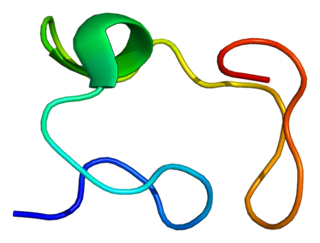
Metallothionein-1H is a protein that in humans is encoded by the MT1H gene.

Zinc transporter ZIP1 is a protein that in humans is encoded by the SLC39A1 gene.

Napsin-A is an aspartic proteinase that is encoded in humans by the NAPSA gene. The name napsin comes from novel aspartic proteinase of the pepsin family.

TATA element modulatory factor is a protein that in humans is encoded by the TMF1 gene.

Caveolin-2 is a protein that in humans is encoded by the CAV2 gene.

Metallothionein-1B is a protein that in humans is encoded by the MT1B gene.

Metallothionein-1M is a protein that in humans is encoded by the MT1M gene.
Melatonin receptor 1C, also known as MTNR1C, is a protein that is encoded by the Mtnr1c gene. This receptor has been identified in fish, amphibia, and birds, but not in humans.
